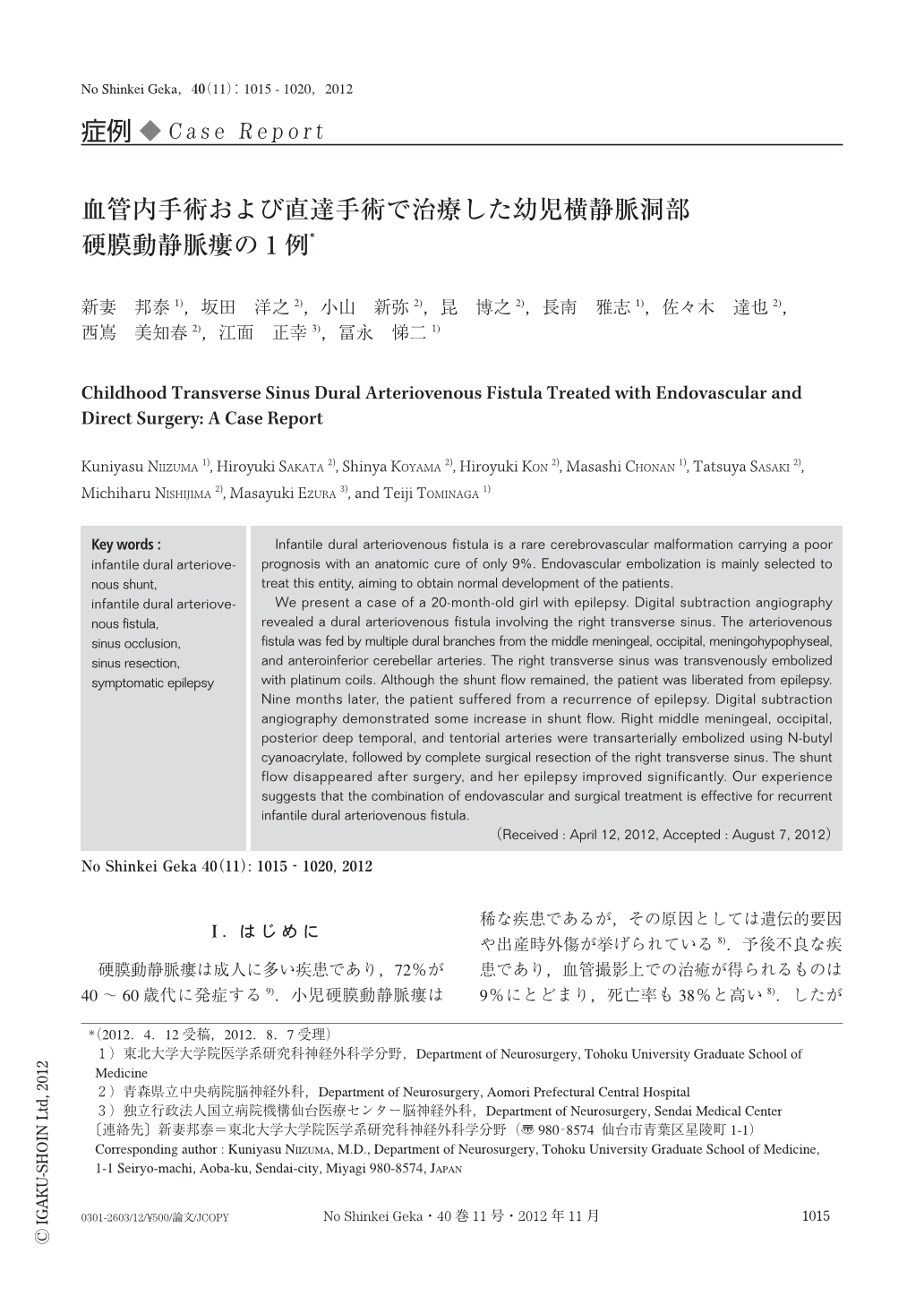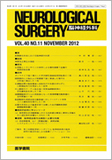Japanese
English
- 有料閲覧
- Abstract 文献概要
- 1ページ目 Look Inside
- 参考文献 Reference
Ⅰ.はじめに
硬膜動静脈瘻は成人に多い疾患であり,72%が40~60歳代に発症する9).小児硬膜動静脈瘻は稀な疾患であるが,その原因としては遺伝的要因や出産時外傷が挙げられている8).予後不良な疾患であり,血管撮影上での治癒が得られるものは9%にとどまり,死亡率も38%と高い8).したがって,神経症状の安定化や悪化の防止が治療の主目標となる場合が多い.今回われわれは,血管内手術および直達手術で根治した幼児横静脈洞部硬膜動静脈瘻の症例を経験したので,文献的考察を加えて報告する.
Infantile dural arteriovenous fistula is a rare cerebrovascular malformation carrying a poor prognosis with an anatomic cure of only 9%. Endovascular embolization is mainly selected to treat this entity, aiming to obtain normal development of the patients.
We present a case of a 20-month-old girl with epilepsy. Digital subtraction angiography revealed a dural arteriovenous fistula involving the right transverse sinus. The arteriovenous fistula was fed by multiple dural branches from the middle meningeal, occipital, meningohypophyseal, and anteroinferior cerebellar arteries. The right transverse sinus was transvenously embolized with platinum coils. Although the shunt flow remained, the patient was liberated from epilepsy. Nine months later, the patient suffered from a recurrence of epilepsy. Digital subtraction angiography demonstrated some increase in shunt flow. Right middle meningeal, occipital, posterior deep temporal, and tentorial arteries were transarterially embolized using N-butyl cyanoacrylate, followed by complete surgical resection of the right transverse sinus. The shunt flow disappeared after surgery, and her epilepsy improved significantly. Our experience suggests that the combination of endovascular and surgical treatment is effective for recurrent infantile dural arteriovenous fistula.

Copyright © 2012, Igaku-Shoin Ltd. All rights reserved.


